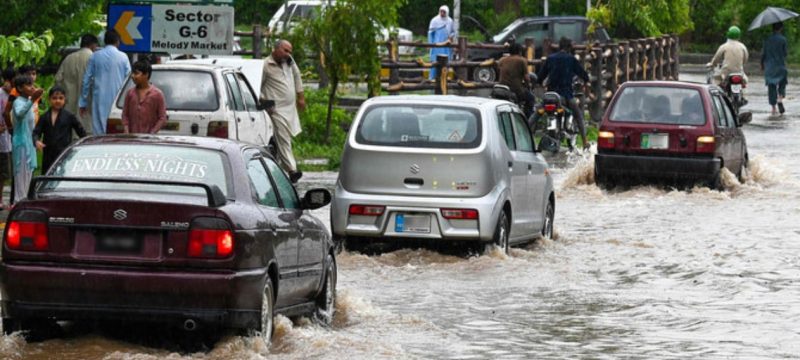The National Disaster Management Authority (NDMA) has informed the Senate Standing Committee on Climate Change that this year’s monsoon season is likely to arrive earlier than usual and bring heavier rainfall across several regions.
During the committee’s visit to the NDMA headquarters, Chairman Lt Gen Inam Haider Malik shared that the monsoon could commence around June 26–27, approximately three to four days ahead of the usual schedule. He noted that overall rainfall is expected to exceed normal levels by up to 5%, with northeastern Punjab possibly facing a 50% increase in precipitation.
Read more: Scorching Heatwave Hits Lahore as Winds Subside, No Rain Expected
Later, at a committee meeting chaired by Senator Sherry Rehman, concerns were raised about the growing frequency of extreme weather events and their long-term impacts. The NDMA chief presented climate projections based on three decades of historical data, highlighting key monsoon and temperature trends.
He stated that Punjab, which typically receives around 344mm of rain during the monsoon season, could receive up to 388mm this year. Major cities including Lahore, Sialkot, Gujranwala, and Narowal are expected to receive around 380mm of rainfall. In Khyber Pakhtunkhwa (KP), the average rainfall may rise from 243mm to nearly 300mm, with southern parts of KP and Punjab expected to receive normal or above-normal rainfall levels.
On the other hand, northern KP and Balochistan are projected to receive below-average rainfall, while temperatures in these areas may climb higher than usual. Azad Kashmir is also likely to experience more rainfall than normal.
Temperature increases are expected across the country. Punjab may experience a rise of 2–3°C, while Sindh could see temperatures climb by 2.5°C. In southern Punjab and Sindh, the increase could reach 4–5°C, potentially worsening heatwave conditions. KP is also expected to face a 1.5°C temperature increase, with more rainfall, except in areas like Chitral and other glacier-affected zones, where rainfall is predicted to decline.
Lt Gen Malik emphasized that the NDMA had issued its advisory for the ongoing heatwave six months ago and continues to provide forecasts well in advance. He also warned of a rise in cloudbursts and flooding risks in glacier-dependent regions, citing rapid glacial melt driven by higher temperatures as a major concern. This accelerated melting, he added, could initially cause floods in Gilgit-Baltistan, KP, and Azad Kashmir, followed by potential water shortages as glacial reserves deplete faster than expected.
Senator Sherry Rehman also voiced concern over India’s unilateral suspension of the Indus Waters Treaty. NDMA officials confirmed that a detailed assessment is currently being conducted to understand the possible consequences for Pakistan’s water resources.
The NDMA further stressed the importance of removing encroachments along riverbanks to reduce the impact of flooding during the monsoon. The session concluded with strong calls for better disaster preparedness, more accurate weather forecasting, and enhanced coordination between federal and provincial authorities to effectively manage climate-related risks.









